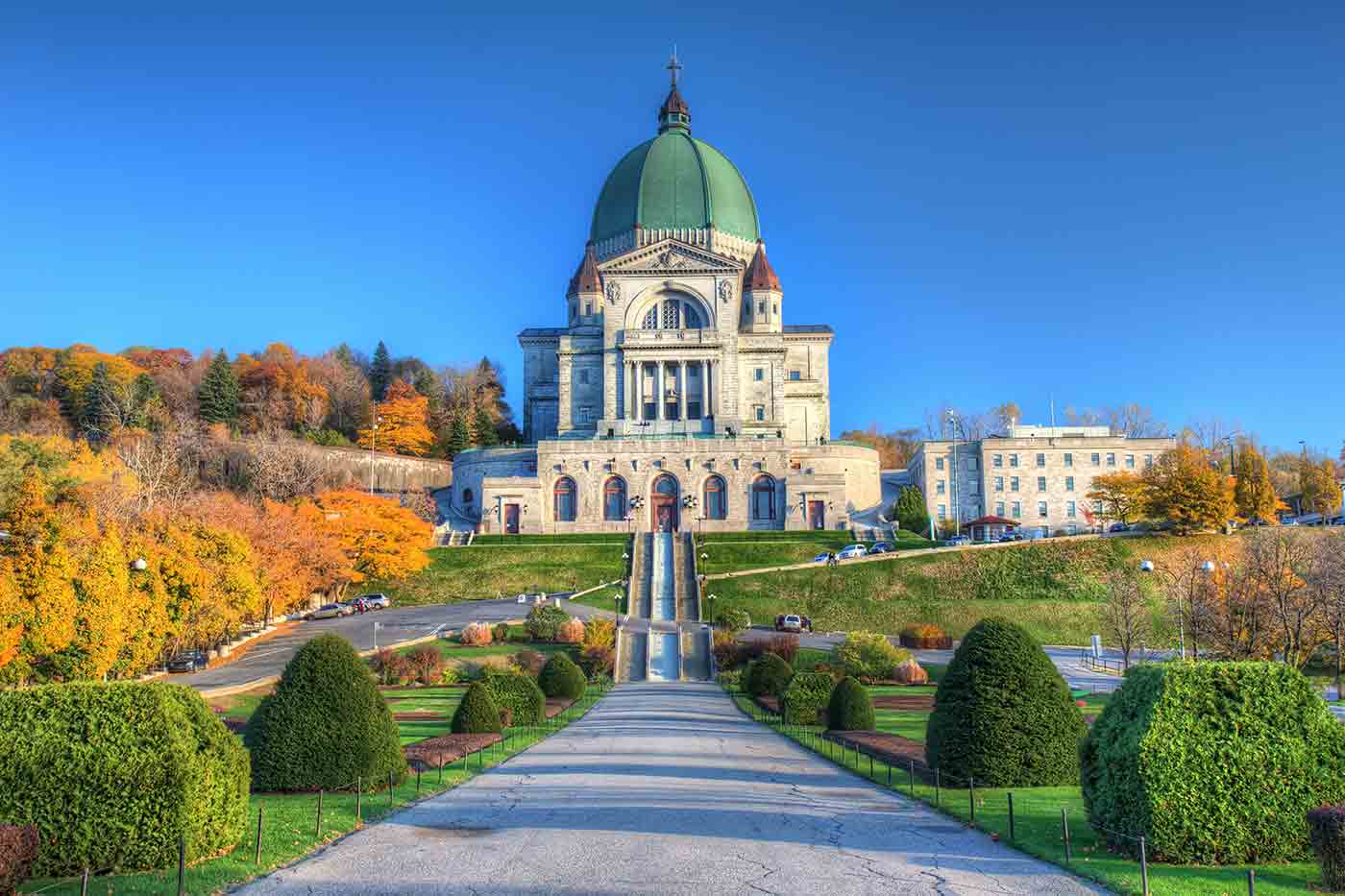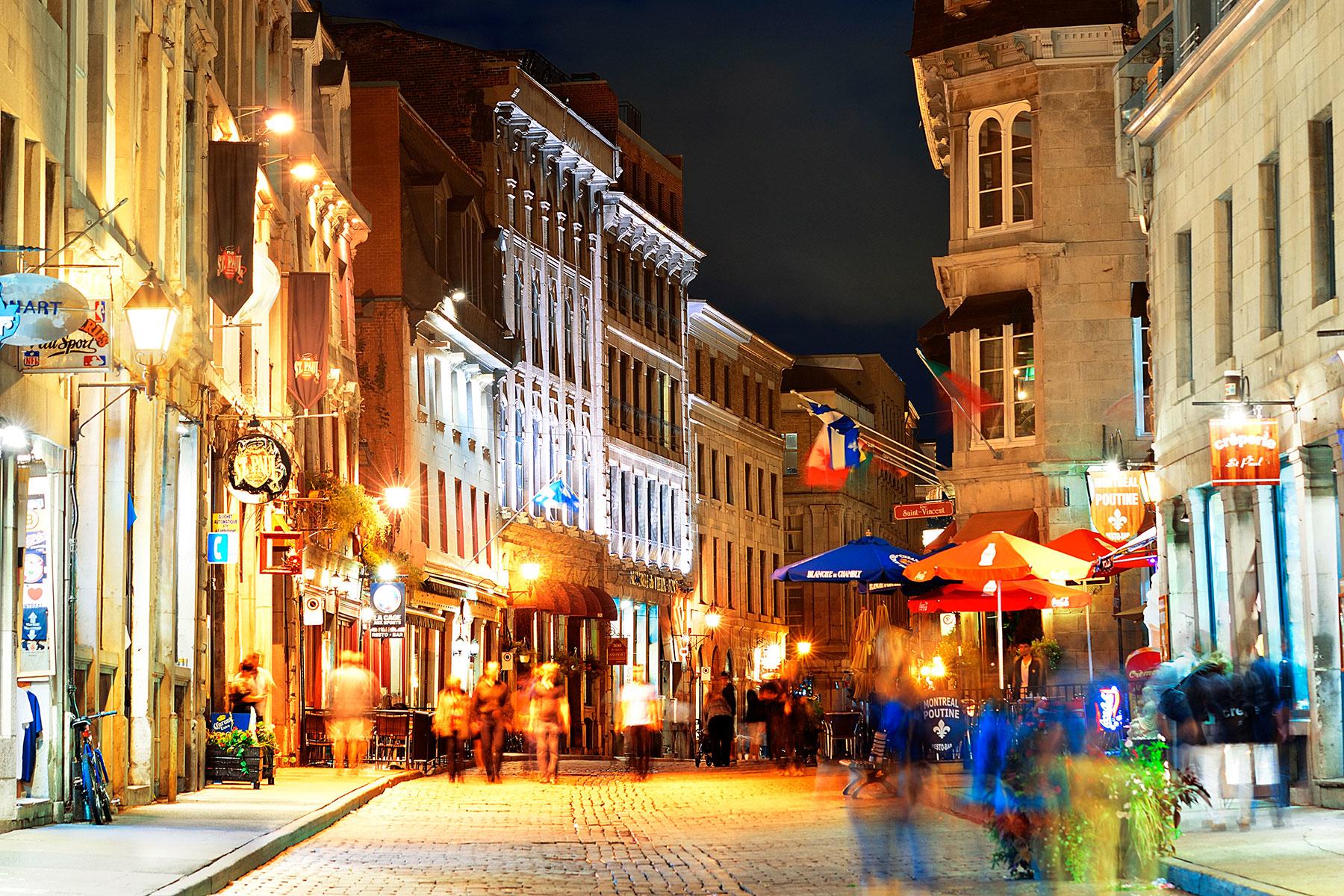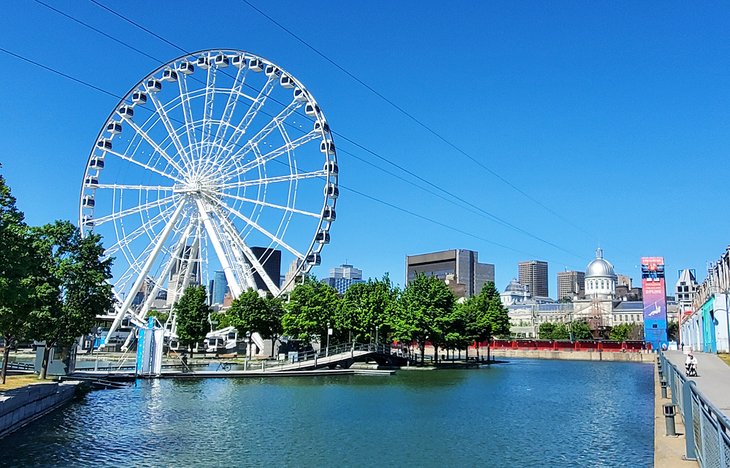
Montreal, a vibrant metropolis nestled on an island in the St. Lawrence River, pulsates with a unique blend of European charm and North American dynamism. This bilingual city, the second-largest in Canada, offers an intoxicating mix of history etched in its cobblestone streets, a thriving arts and culture scene, and a culinary landscape that will tantalize your taste buds. Whether you’re a history buff, an art aficionado, a foodie, or simply seeking an unforgettable urban adventure, Montreal promises an experience that will linger long after you’ve departed.
A Glimpse into Montreal’s Rich Tapestry: History and Heritage
Montreal’s story is a captivating narrative of discovery, settlement, and cultural evolution. Its origins trace back to Indigenous peoples who inhabited the region for millennia. In 1535, French explorer Jacques Cartier landed on the island, naming it Mont Réal (Mount Royal) after the prominent hill overlooking the area. Permanent French settlement began in 1642 with the founding of Ville-Marie by Paul de Chomedey, sieur de Maisonneuve.

Related Articles about Montreal: A Symphony of Culture, History, and Culinary Delights:
- Venice: A Labyrinth of Wonders, History, and Unforgettable Experiences
- Emerald Isle Enchantment: A Comprehensive Guide to Discovering Ireland
- A Comprehensive Traveler’s Guide to the United Kingdom: From Ancient Stones to Modern Marvels
- The Heart of Africa: An Unforgettable Journey Through Kenya
- Krabi: Thailand’s Andaman Jewel – A Comprehensive Travel Guide
Over the centuries, Montreal transitioned from a fur trading post to a vital port and a burgeoning industrial center. It witnessed periods of both French and British rule, leaving an indelible mark on its architecture, language, and cultural identity. The city’s historical core, Vieux-Montréal (Old Montreal), stands as a testament to this rich past, with its preserved 17th and 18th-century buildings, cobblestone alleys, and grand public squares.
The 20th century saw Montreal flourish as a global hub for finance, aviation, and arts. The 1967 International and Universal Exposition (Expo 67) put the city on the international map, showcasing its innovative spirit and modern aspirations. Today, Montreal continues to embrace its heritage while forging ahead as a forward-thinking, multicultural city.
Must-See Attractions: Unveiling Montreal’s Treasures
Montreal boasts a wealth of attractions catering to every interest. Here are some of the absolute must-sees:
1. Vieux-Montréal (Old Montreal): Step back in time as you wander through the charming streets of Old Montreal.
- Notre-Dame Basilica: A breathtaking masterpiece of Neo-Gothic architecture, this basilica is renowned for its intricate woodwork, stunning stained-glass windows, and the awe-inspiring celestial ceiling. Even if you’re not religious, the sheer artistry and grandeur are worth experiencing.
- Place Jacques-Cartier: This lively public square is the heart of Old Montreal, brimming with street performers, artists, outdoor cafes, and flower stalls. It’s the perfect spot to soak in the atmosphere and people-watch.
- Pointe-à-Callière, Montreal Archaeology and History Complex: This fascinating museum is built on the very site where Montreal was founded. It offers a captivating journey through the city’s history, from its Indigenous roots to its colonial past, with engaging exhibits and archaeological discoveries.
- Old Port of Montreal: This revitalized waterfront area offers a plethora of activities, from boat tours and zip-lining to ice skating in the winter and exploring the Montreal Science Centre.

2. Mount Royal Park: Designed by Frederick Law Olmsted (the landscape architect behind New York’s Central Park), this expansive urban park offers panoramic views of the city.
- Kondiaronk Belvedere: This iconic viewpoint provides the most famous vista of Montreal’s skyline.
- Beaver Lake: A serene spot for picnicking, boating, or simply enjoying the tranquility.
- Cross of Mount Royal: A prominent landmark offering further elevated perspectives.
3. Plateau Mont-Royal: This vibrant and bohemian neighborhood is known for its colorful houses with iconic outdoor staircases, independent boutiques, trendy cafes, and lively atmosphere.
- Rue Saint-Denis and Rue Mont-Royal: These main arteries are perfect for exploring, shopping, and dining.
- Parc La Fontaine: A beautiful urban park that serves as a gathering place for locals.
4. Museums and Galleries: Montreal is a cultural powerhouse with world-class institutions.
- Montreal Museum of Fine Arts (MMFA): Home to an impressive collection spanning centuries and diverse artistic movements, from ancient to contemporary art.
- Musée d’art contemporain de Montréal (MAC): Dedicated to contemporary art, this museum showcases innovative and thought-provoking exhibitions.
- Pointe-à-Callière (mentioned above): A must for history enthusiasts.
5. Olympic Park: The site of the 1976 Summer Olympics, this complex offers a variety of attractions.
- Montreal Tower: The tallest inclined tower in the world, offering incredible views from its observation deck.
- Biodome: A unique ecosystem housing five distinct environments from the Americas, allowing you to encounter a variety of flora and fauna.
- Insectarium, Botanical Garden, and Planetarium: These sister institutions offer fascinating insights into nature and the cosmos.
6. Jean-Talon Market and Atwater Market: Immerse yourself in the vibrant local food scene at these bustling public markets. Sample fresh produce, artisanal cheeses, baked goods, and local delicacies.
7. Underground City (RESO): This extensive network of interconnected tunnels, shopping malls, metro stations, and office buildings is a unique feature of Montreal, especially useful during harsh winter weather.
Montreal’s Culinary Delights: A Food Lover’s Paradise
Montreal’s culinary scene is a true reflection of its multicultural identity, offering a delightful fusion of French, Italian, Jewish, Asian, and contemporary influences.
- Poutine: No trip to Montreal is complete without indulging in this iconic dish: fries, cheese curds, and gravy. You’ll find variations everywhere, from casual diners to upscale restaurants.
- Smoked Meat: Montreal’s smoked meat, particularly from Schwartz’s Deli, is legendary. Savor the tender, flavorful meat piled high on rye bread with mustard.
- Bagels: Montreal-style bagels are distinct from their New York counterparts, being smaller, sweeter, and boiled in honey-sweetened water before being baked in a wood-fired oven. St-Viateur Bagel and Fairmount Bagel are the classic choices.
- French Cuisine: From classic bistros serving escargots and coq au vin to modern interpretations, the French influence is undeniable and expertly executed.
- Global Flavors: Explore a world of taste with excellent Italian trattorias, vibrant Vietnamese pho houses, authentic Chinese dim sum restaurants, and innovative fusion eateries.
Navigating Montreal: Travel Tips for a Seamless Experience
To make the most of your Montreal adventure, keep these travel tips in mind:
- Language: Montreal is a bilingual city, with both French and English widely spoken. While French is the official language, you’ll have no trouble communicating in English in most tourist areas and businesses. Learning a few basic French phrases like "Bonjour" (hello), "Merci" (thank you), and "S’il vous plaît" (please) is always appreciated.
- Currency: The currency is the Canadian Dollar (CAD). Credit cards are widely accepted, but it’s good to have some cash for smaller purchases or markets.
- Tipping: Tipping is customary in restaurants, bars, and for services like taxis and hotel staff. A tip of 15-20% is standard for good service in restaurants.
- Best Time to Visit:
- Summer (June-August): Warmest months, perfect for outdoor activities, festivals, and exploring the city on foot. Be prepared for crowds and higher prices.
- Fall (September-October): Crisp air, beautiful fall foliage, and fewer crowds. A fantastic time for walking and enjoying the city’s charm.
- Spring (April-May): The city awakens from winter, with blooming flowers and milder weather. Some outdoor attractions might still be opening.
- Winter (November-March): Cold and snowy, but Montreal transforms into a winter wonderland. Ideal for cozy cafes, indoor attractions, and winter sports. The city’s many festivals, like the Montreal en Lumière, make it a vibrant winter destination.
- Connectivity: Wi-Fi is widely available in hotels, cafes, and public spaces. Consider purchasing a local SIM card for easier data access.
- Safety: Montreal is generally a safe city. However, like any major urban center, it’s wise to be aware of your surroundings, especially in crowded areas.
Accommodation Options: Finding Your Perfect Montreal Stay
Montreal offers a diverse range of accommodation to suit every budget and preference:
- Luxury Hotels: Found primarily in the downtown core and Old Montreal, offering impeccable service, stunning views, and top-notch amenities.
- Boutique Hotels: Charming and stylish hotels, often located in trendy neighborhoods like the Plateau or Old Montreal, offering a more intimate and personalized experience.
- Mid-Range Hotels: A wide selection of comfortable and well-located hotels throughout the city, providing good value for money.
- Budget-Friendly Options: Hostels and budget hotels are available, particularly in areas like the Latin Quarter or near universities, offering affordable stays for backpackers and budget travelers.
- Vacation Rentals (Airbnb, etc.): Renting an apartment or a room can be a great option for families or those seeking a more local experience, especially in neighborhoods like the Plateau or Mile End.
Popular Neighborhoods to Consider for Accommodation:
- Old Montreal: For history buffs and those who want to be immersed in the city’s charm.
- Downtown: For convenience, proximity to shopping, business, and major attractions.
- Plateau Mont-Royal: For a bohemian vibe, trendy cafes, and a local feel.
- Latin Quarter: For its lively student atmosphere, theaters, and affordable dining.
Getting Around Montreal: Efficient Transportation Options
Montreal boasts an excellent public transportation system and is a very walkable and bike-friendly city.
- Montreal Metro (STM): The subway system is efficient, clean, and connects most major attractions and neighborhoods. It’s the easiest way to get around quickly. Purchase a multi-day pass for convenience and savings.
- Buses (STM): The bus network complements the metro, providing extensive coverage throughout the city.
- BIXI Bike Share: During the warmer months, BIXI offers a convenient and affordable way to explore the city on two wheels. There are numerous docking stations throughout Montreal.
- Walking: Many of Montreal’s most captivating areas, especially Old Montreal and the Plateau, are best explored on foot.
- Taxis and Ride-Sharing: Taxis and services like Uber are readily available for door-to-door transportation.
- Driving: While possible, driving and parking in downtown Montreal can be challenging and expensive. It’s generally recommended to rely on public transport and walking.
Conclusion: Montreal’s Enduring Allure
Montreal is a city that captivates with its multifaceted personality. It’s a place where history whispers from ancient stones, art bursts forth in vibrant galleries, and culinary adventures await at every corner. From the grandeur of Notre-Dame Basilica to the bohemian charm of the Plateau, from the panoramic views atop Mount Royal to the bustling energy of its markets, Montreal offers an experience that is both enriching and unforgettable. Plan your visit, embrace its unique blend of cultures, and let Montreal weave its magic on you. You’ll undoubtedly leave with a piece of its vibrant spirit forever etched in your heart.





